Technology Development
Utilizing Nabtesco’s unique
motion control technology, we create a
“one-of-a-kind” value that our customers demand.
Nabtesco is primarily responsible for the remote-control systems for propulsion engines installed on medium-size and large ships, and the system engineering supporting them. Regarding control systems for diesel engines, which are the heart of ships, we are proactively promoting environmental friendliness by quickly supporting not only mechanical control systems, but also electronic control systems, which are currently mainstream.
technology.01
Evolution of Technology in Nabtesco
<Core Technology> Remote Control Technology
Nabtesco’s remote control equipment began with pneumatic systems and has evolved into relays, electronic boards, and microcomputers. We have a proud history of providing more than 50,000 remote control units over more than half a century.
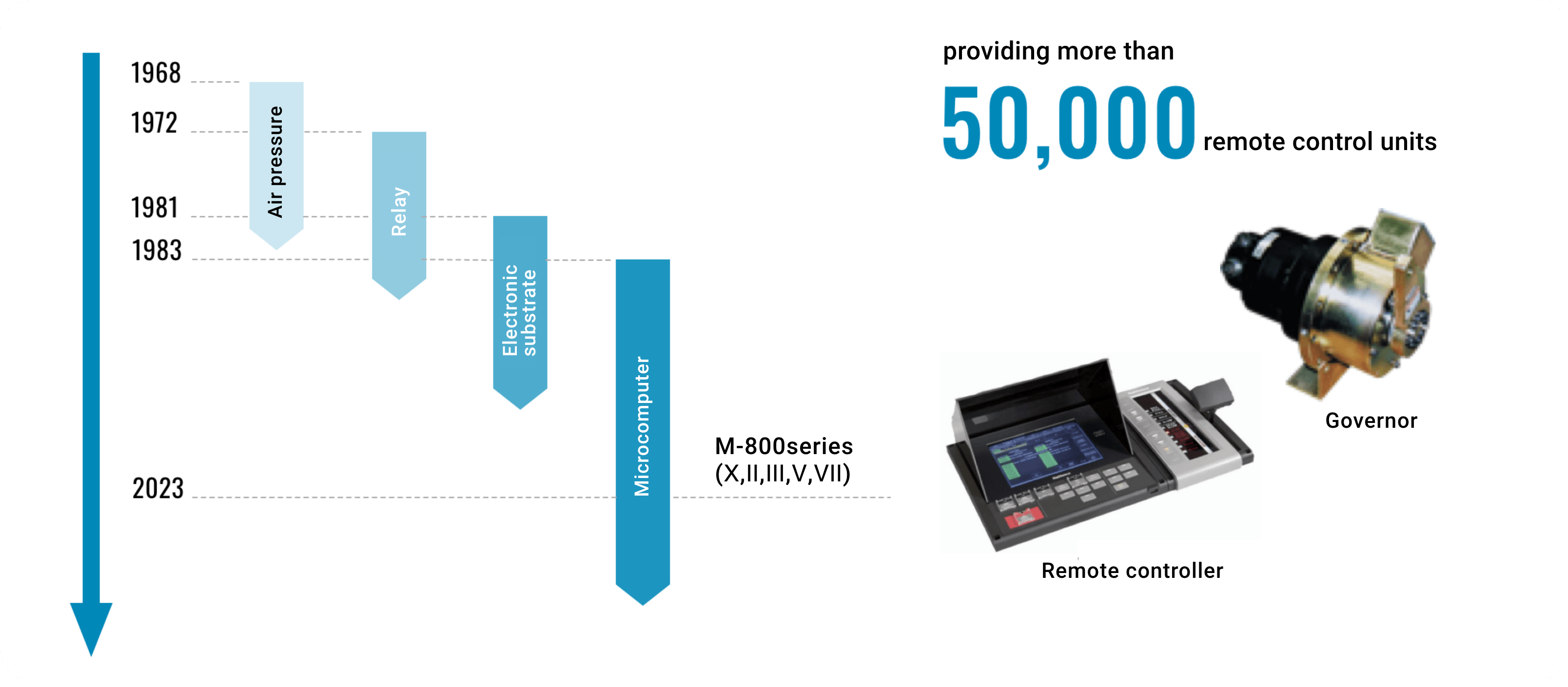
<Evolved Technology> Optimal Navigation Control Technology Using AI and Simulation
By introducing AI technology, Nabtesco will evolve to the next stage. While we are proceeding with the development of simulation and integrated control engine control units (ECUs), we are also considering making integrated control ECUs one of the additional functions of next-generation remote controls.
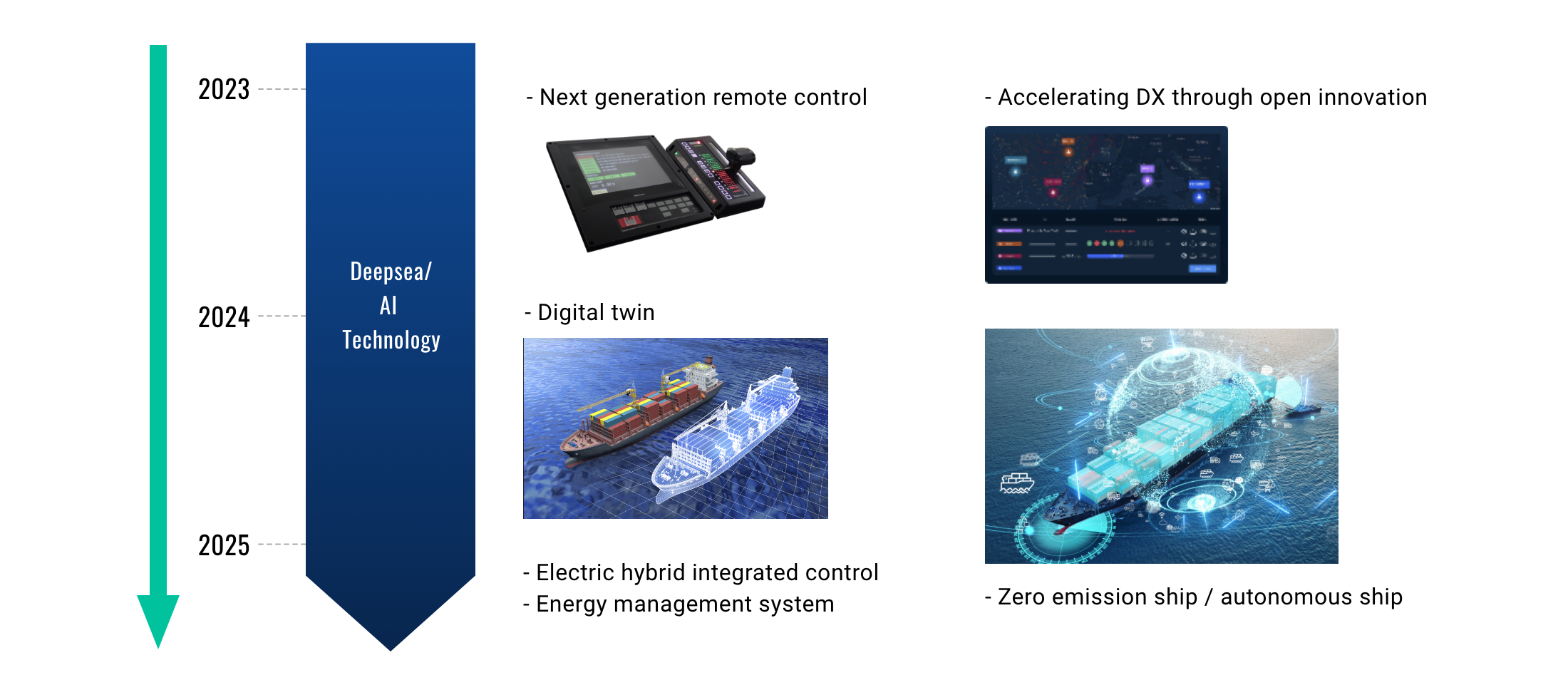
technology.02
Electric Hybrid Propulsion System Technology
Large conventional ships typically have an independent configuration, with the engine providing propulsion to the propeller, and an auxiliary machine driving generators to provide onboard power. In the automobile industry, the proportion of hybrid and electric vehicles is increasing. In the shipping industry as well, we believe that the method of supplying propulsion and onboard power will become more complex in the future, especially for coastal shipping.
To prepare for this, we are promoting the development of an integrated control ECU that determines and controls the operation of each device to optimize the efficiency of increasingly complex energy sources. We are currently developing a model-based control algorithm in anticipation of digital twin control onboard. We will work with other manufacturers to establish a supply system that allows us to integrate and supply each piece of equipment.
Example: Series/parallel hybrid propulsion ship
Developing Integrated Control ECU
Nabtesco has started developing a model-based integrated control ECU. The first step is to check whether the simulation results match the actual ship data. We would like to proceed with on-board implementation using digital twin technology, providing control that matches the marine transportation pattern, and gain the trust of our customers.
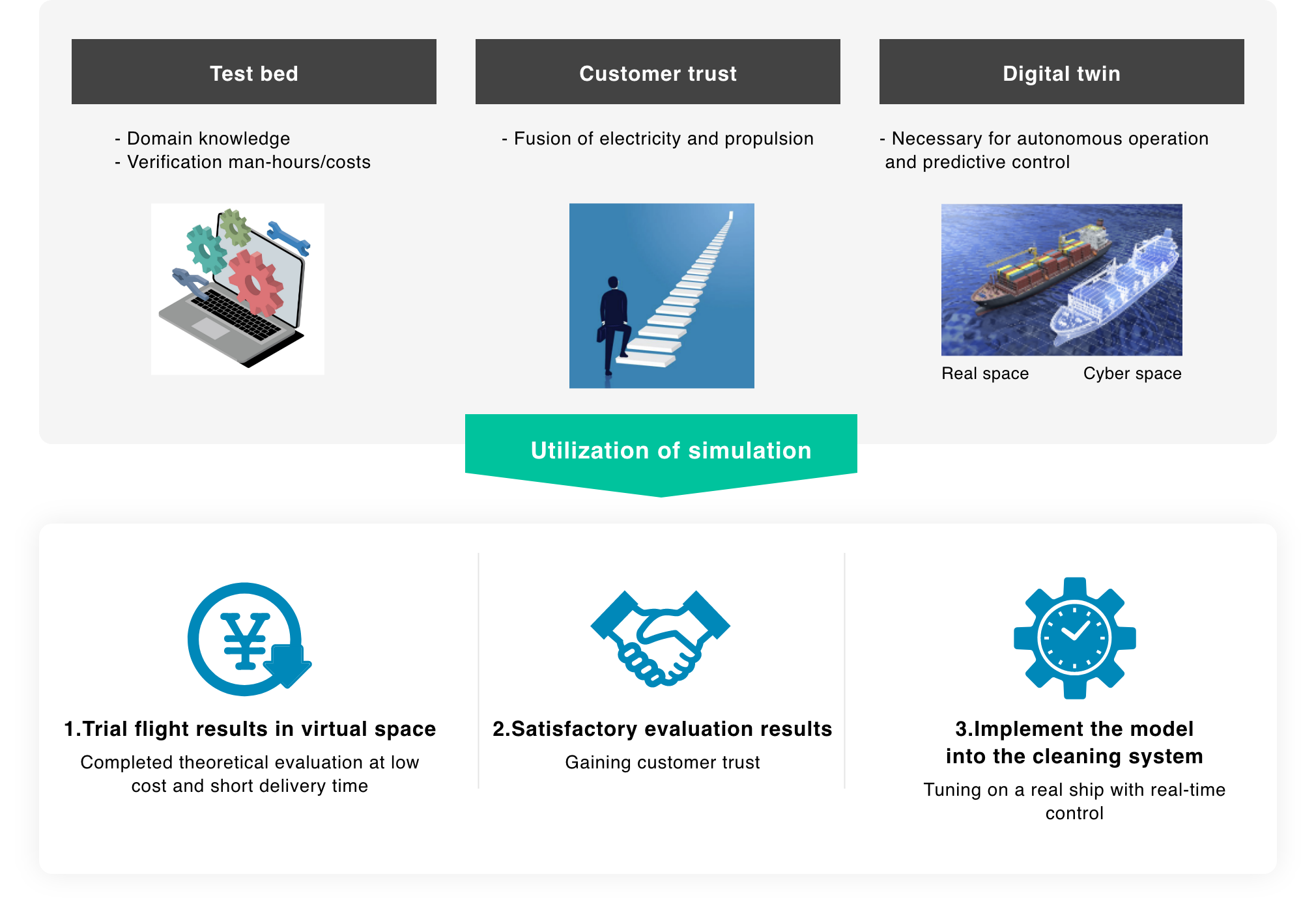
technology.03
Alternative Fuel Technology
Currently, various alternative fuels are being introduced and considered to reduce GHG emissions from ships. Nabtesco is also developing products that can contribute to the practical application of various alternative fuels, including fuel supply gas valves for LNG and hydrogen gas engines.
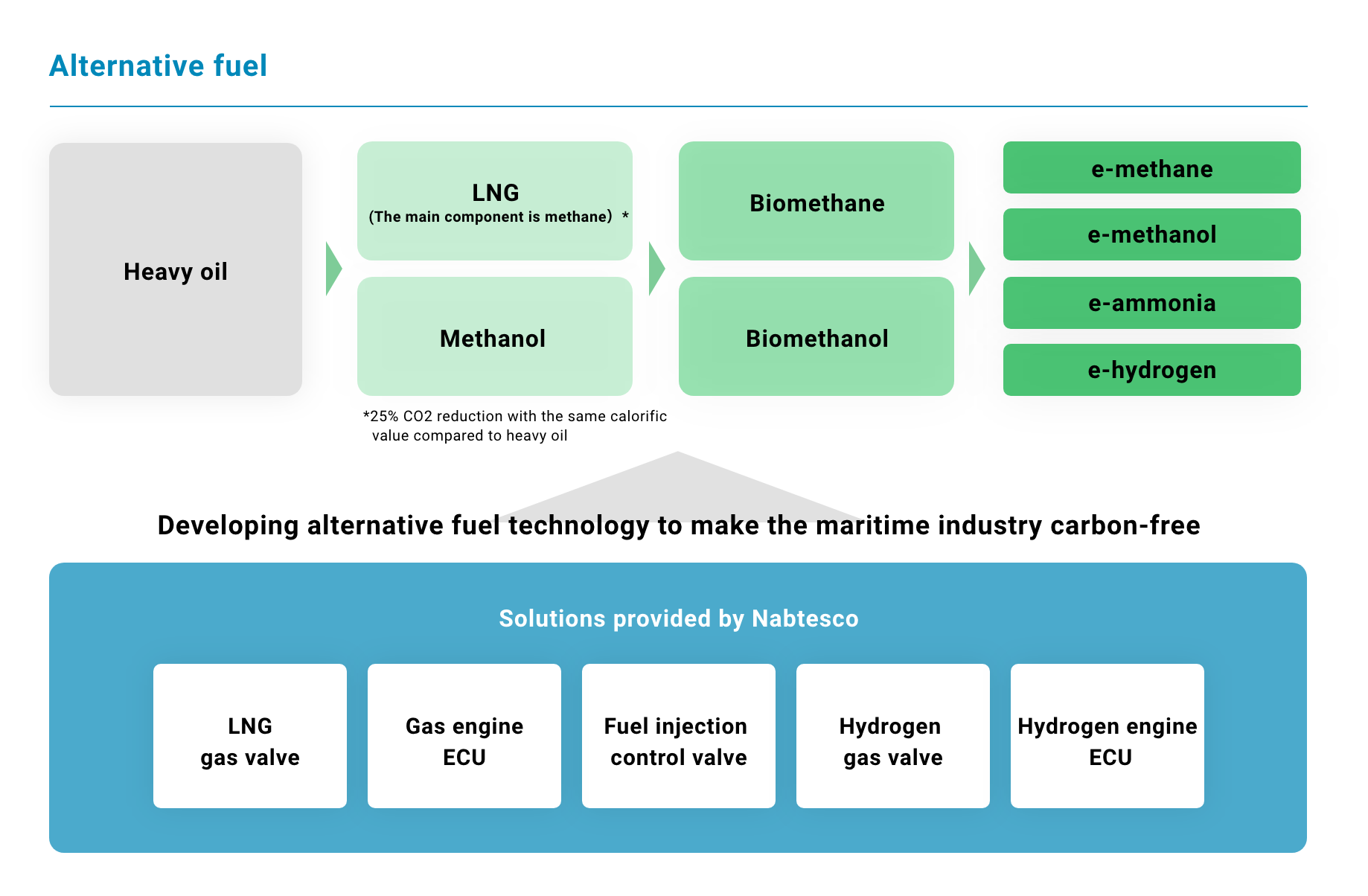
Examples)
Commercialized main chamber/auxiliary chamber gas valve for LNG
The need for gas engines is increasing in response to efforts to reduce environmental impact, such as NOx and CO2 emission regulations. Nabtesco has developed a pre-chamber gas valve for fuel supply to be used in marine gas engines.
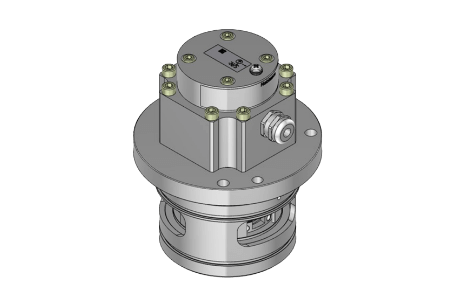
Developing main chamber gas valve for hydrogen/engine controller
Hydrogen engines are attracting attention as a new alternative to conventional diesel and gasoline engines. Nabtesco began developing gas valves for hydrogen engines ahead of other companies. Development of the controller that operates the engine is also progressing.
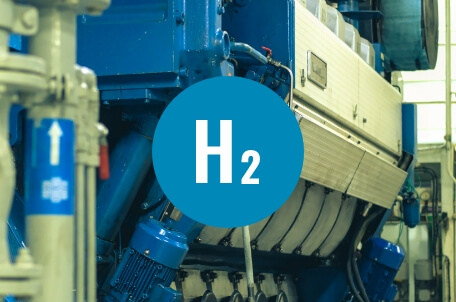
technology.04
Integrated Control of Rudder and Propulsion Engine
(Jointly Developed with TOKYO KEIKI Inc.)
Nabtesco provides propulsion control technology developed through remote control systems for marine engines, and TOKYO KEIKI provides rudder control technology developed through autopilots and gyrocompasses. By combining these technologies through collaborative research and development, we will realize the optimal control of rudders and engines using analysis of the ship’s condition and external environment, and contribute to reduced fuel consumption, safe navigation, and labor savings.
While promoting the development of elemental technologies for autonomous navigation, we will also develop marketing activities for system products, aiming for commercialization in 2025 for a system with functions that meet the needs of ship owners and crew. We are working on ship speed control as an important first step toward realizing the integrated control of rudders and propulsion engines.
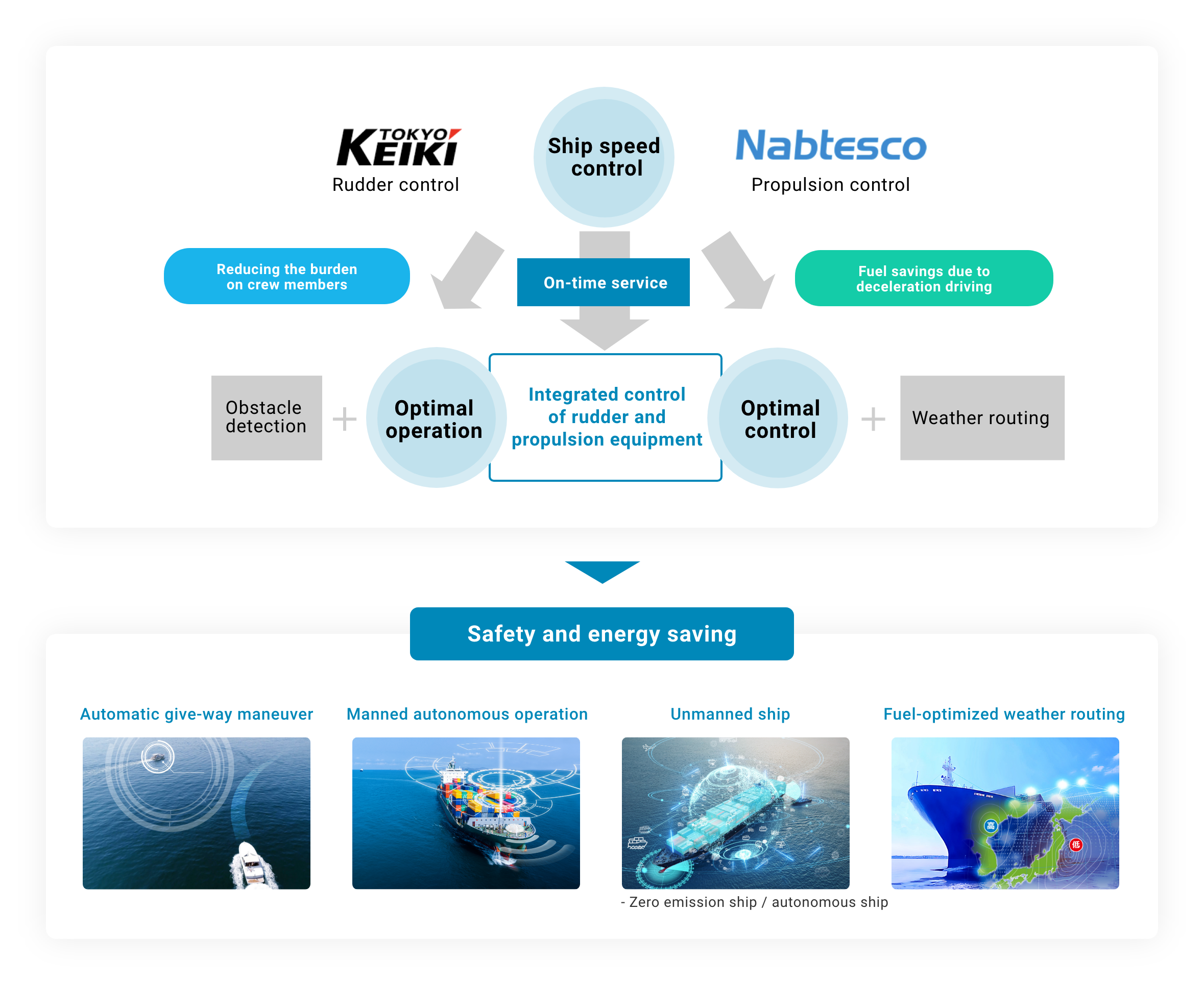
technology.05
Participation in The Project “MEGURI2040”
Fully Autonomous Ship Program
As a member of the Designing the Future of Fully Autonomous Ships Plus consortium (DFFAS+), comprised of 51 companies in Japan, Nabtesco is participating in “The technology development grant program for practical implementation of fully autonomous ships” (Note 1) of MEGURI2040 Fully Autonomous Ship Program (hereafter MEGURI2040) that is promoted by The Nippon Foundation Public Interest Incorporated Foundation (hereafter “The Nippon Foundation”).
We participated in the DFFAS consortium, the predecessor of DFFAS+, in the first stage of MEGURI2040, and will continue to participate in the second stage of MEGURI2040. In the second stage of MEGURI2040, we will provide products such as a bridge maneuvering system, as well as the control technology cultivated through research and development, to a fully packaged new container ship equipped with the fully autonomous navigation function. These technologies realize appropriate speed control in all navigation routes from departure to arrival and avoidance maneuvers, and contribute to safe, fully autonomous navigation.
Demonstration Testing
- – Design of next-generation ships that will support the future of the coastal shipping industry
- – Implementation and Demonstration of a ship-land operation envisioning the future of the coastal shipping industry supported by fully autonomous ships
Use of four different ships and two land support centers
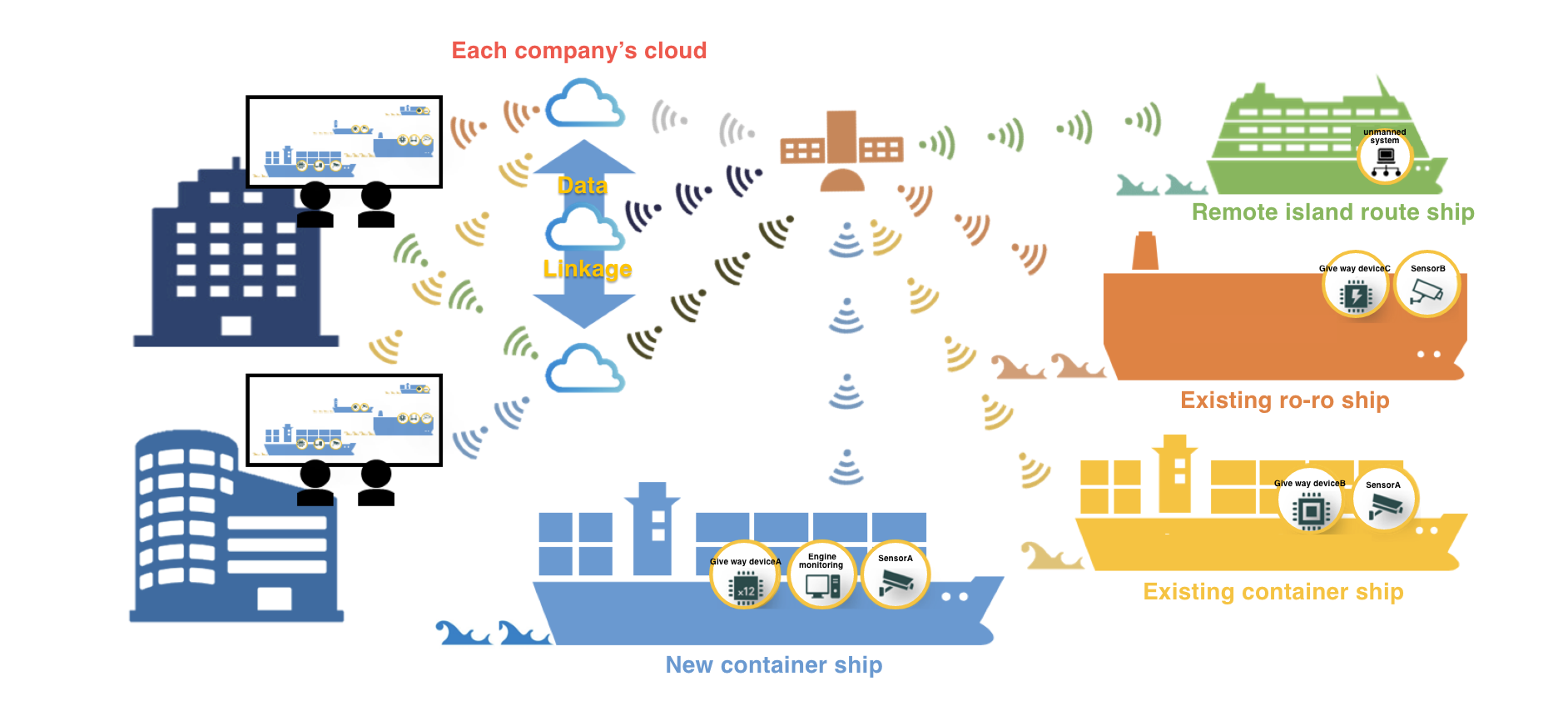


- Note 1) MEGURI2040 Fully Autonomous Ship Program, “The technology development grant program for practical implementation of fully autonomous ships.” This is a subsidy that supports the development of the technology to promote the practical application of fully autonomous ships. It seeks to create further opportunities for technological development in this field, to promote innovation in Japan’s logistics, economy, and social platforms.
